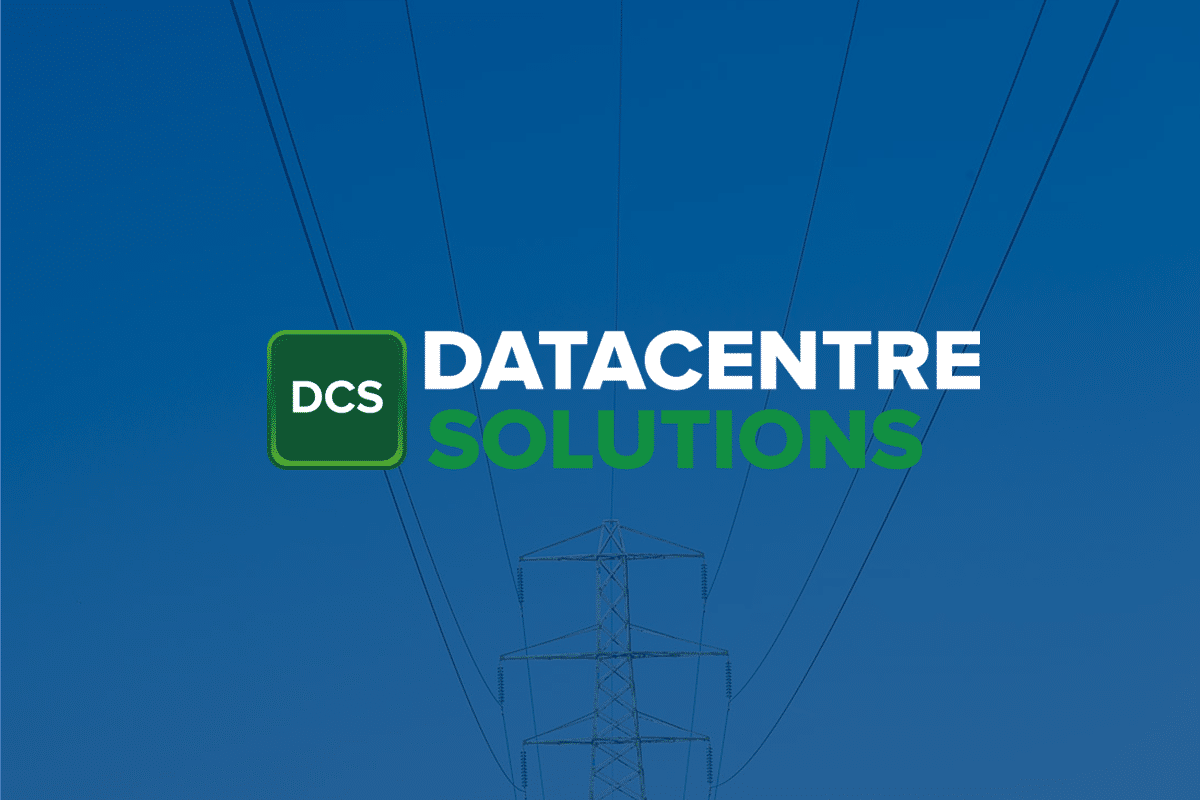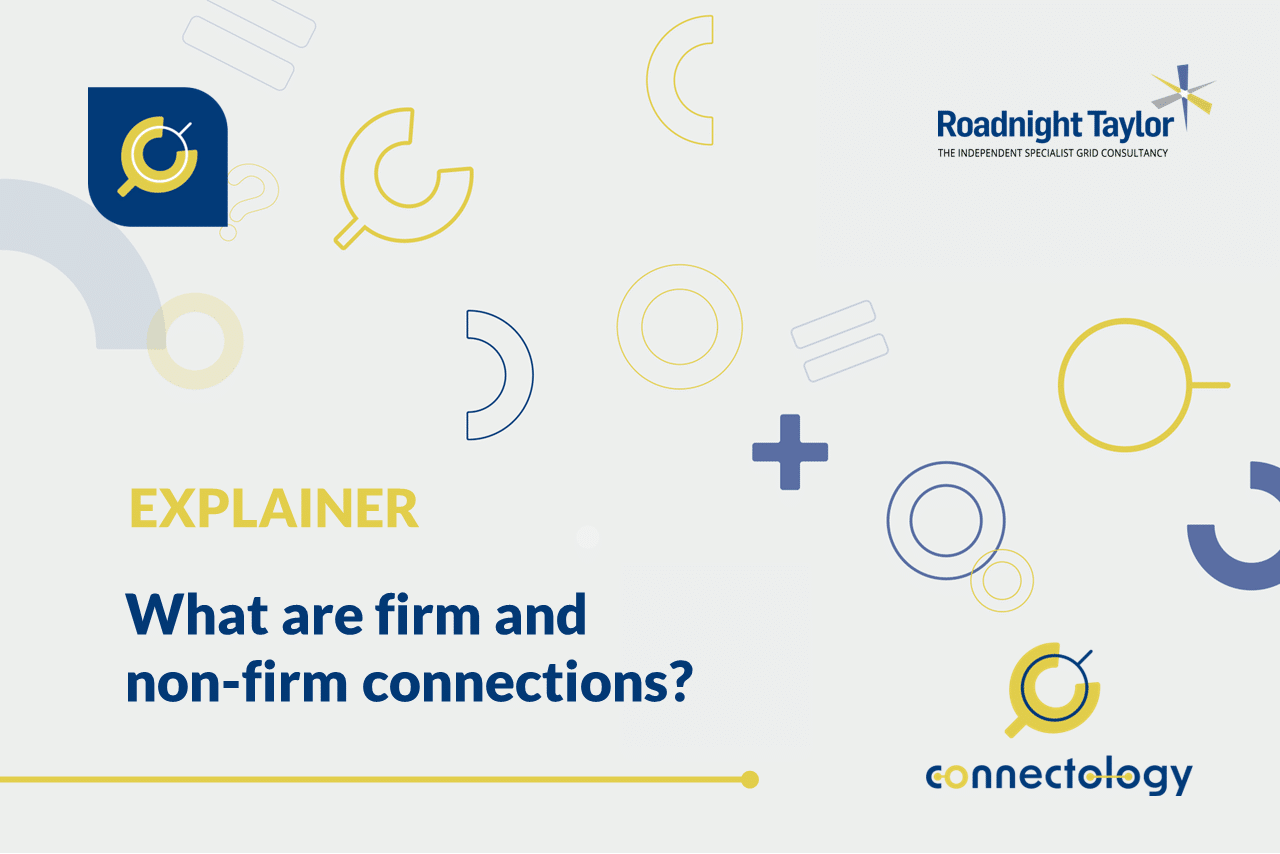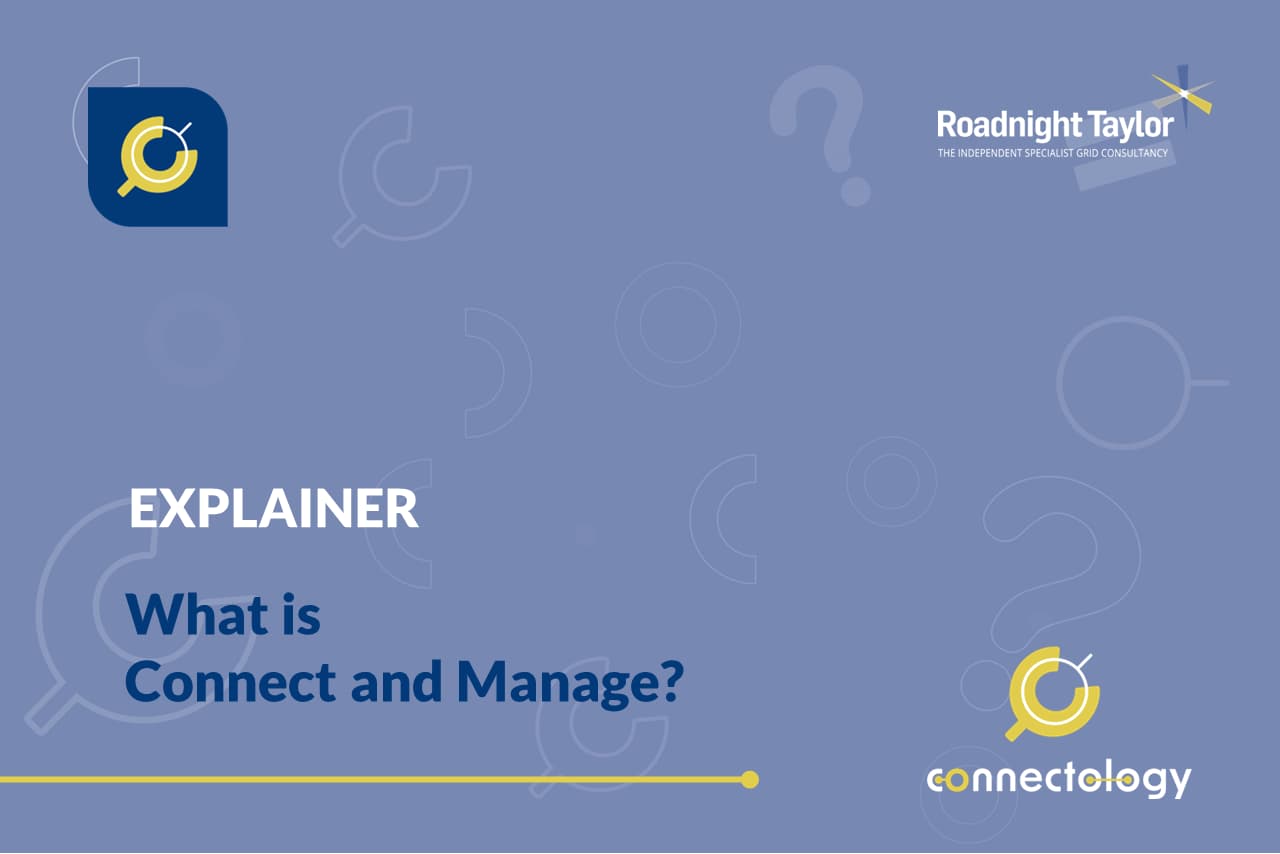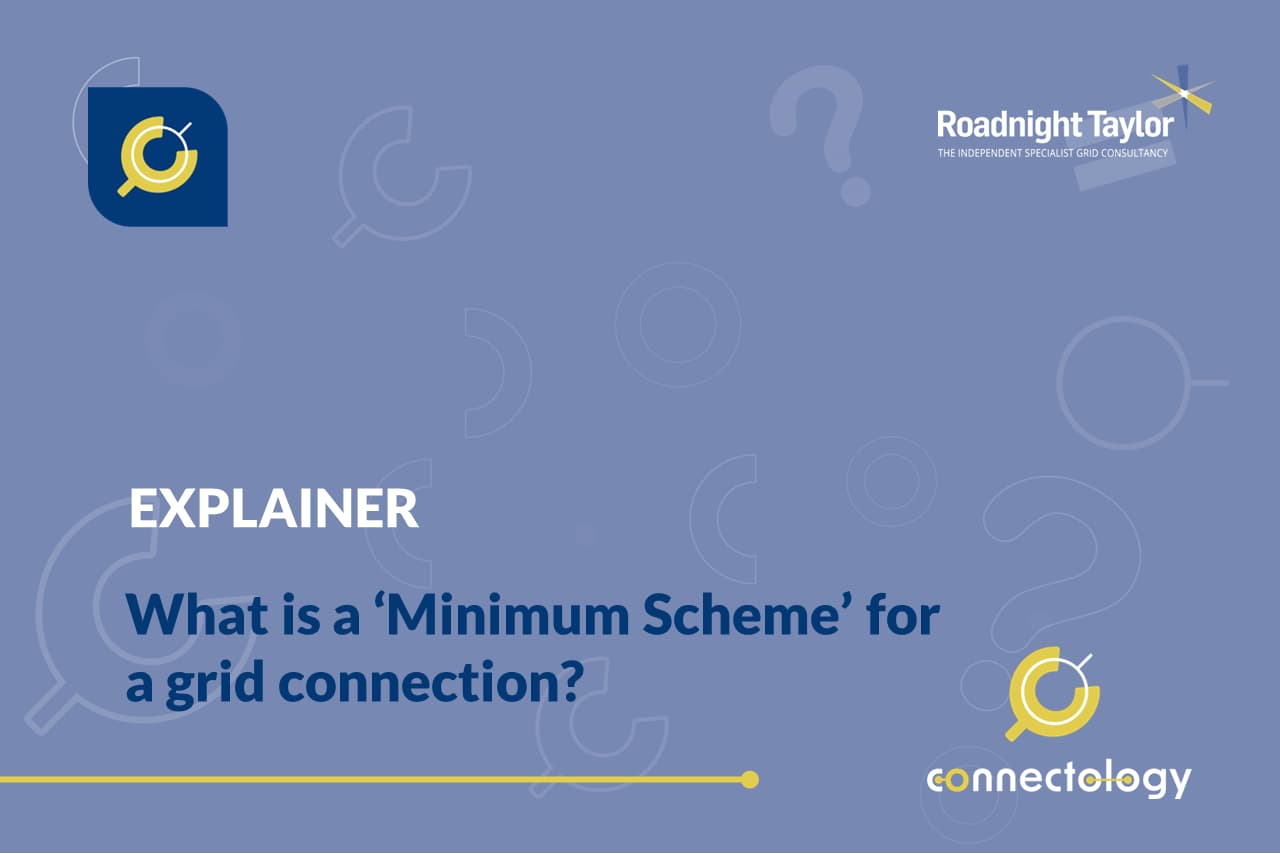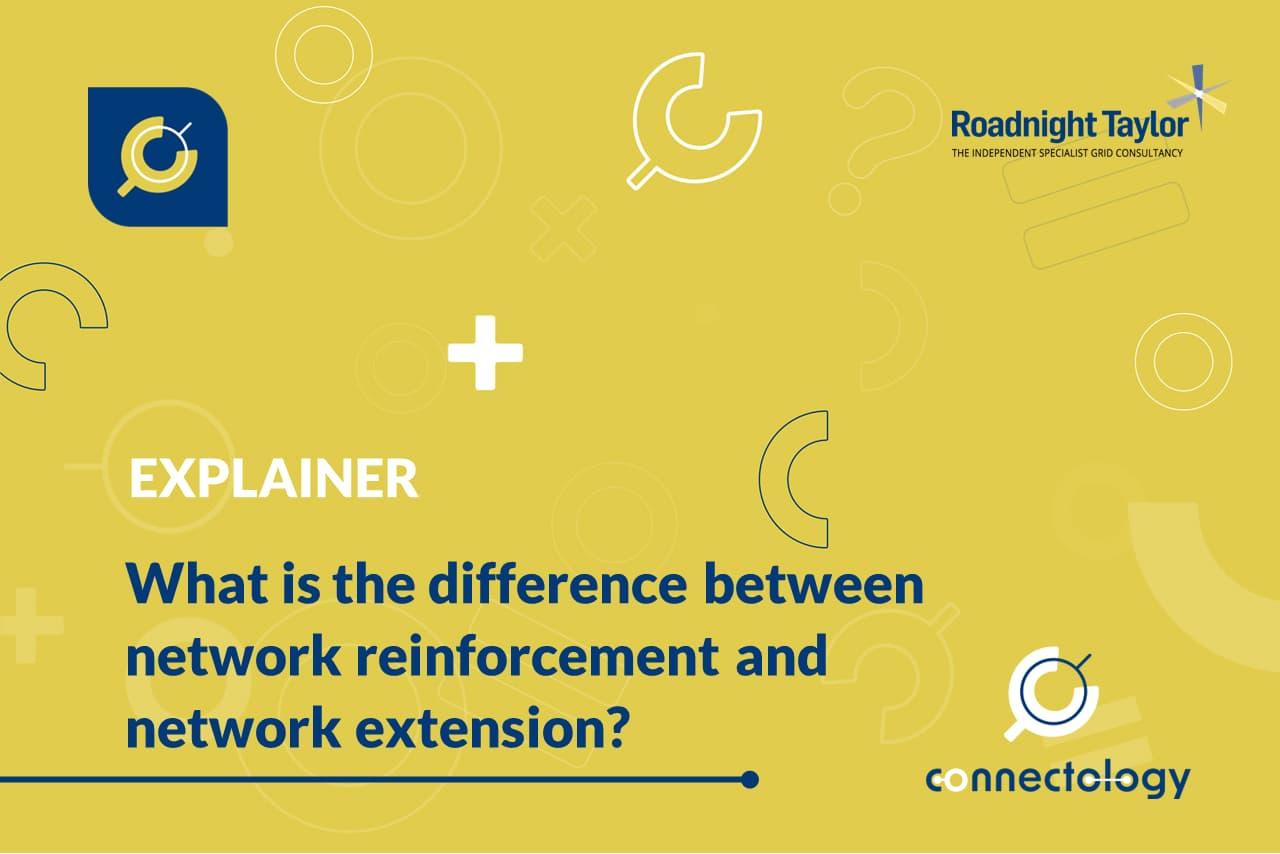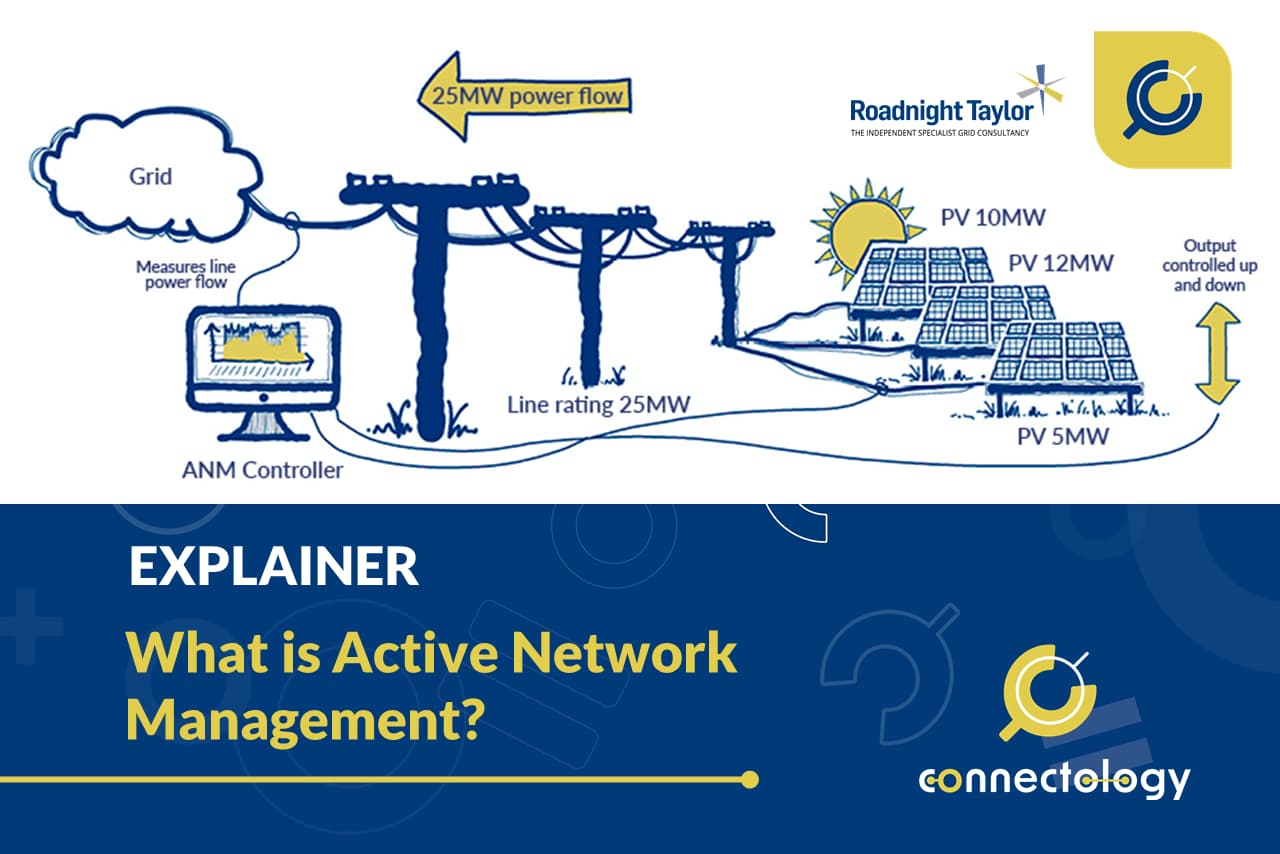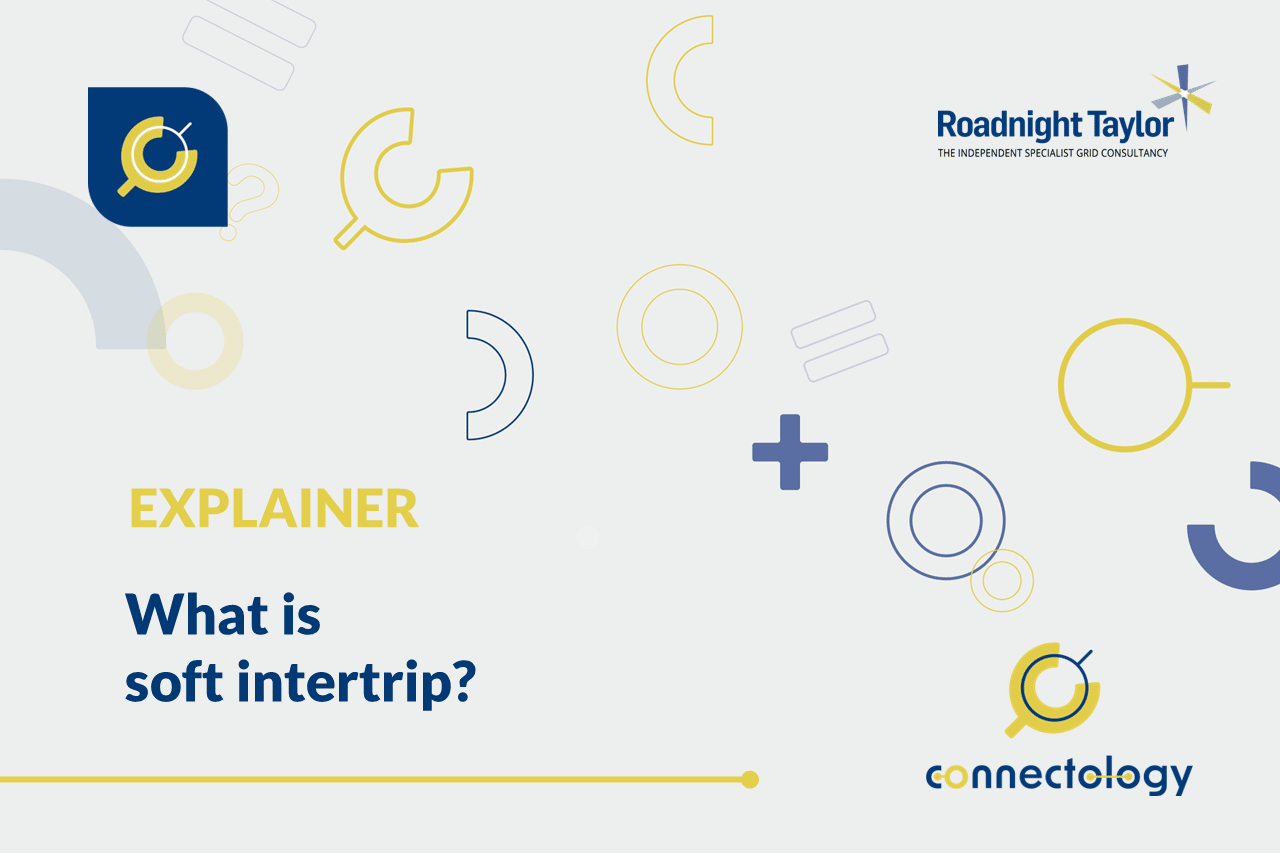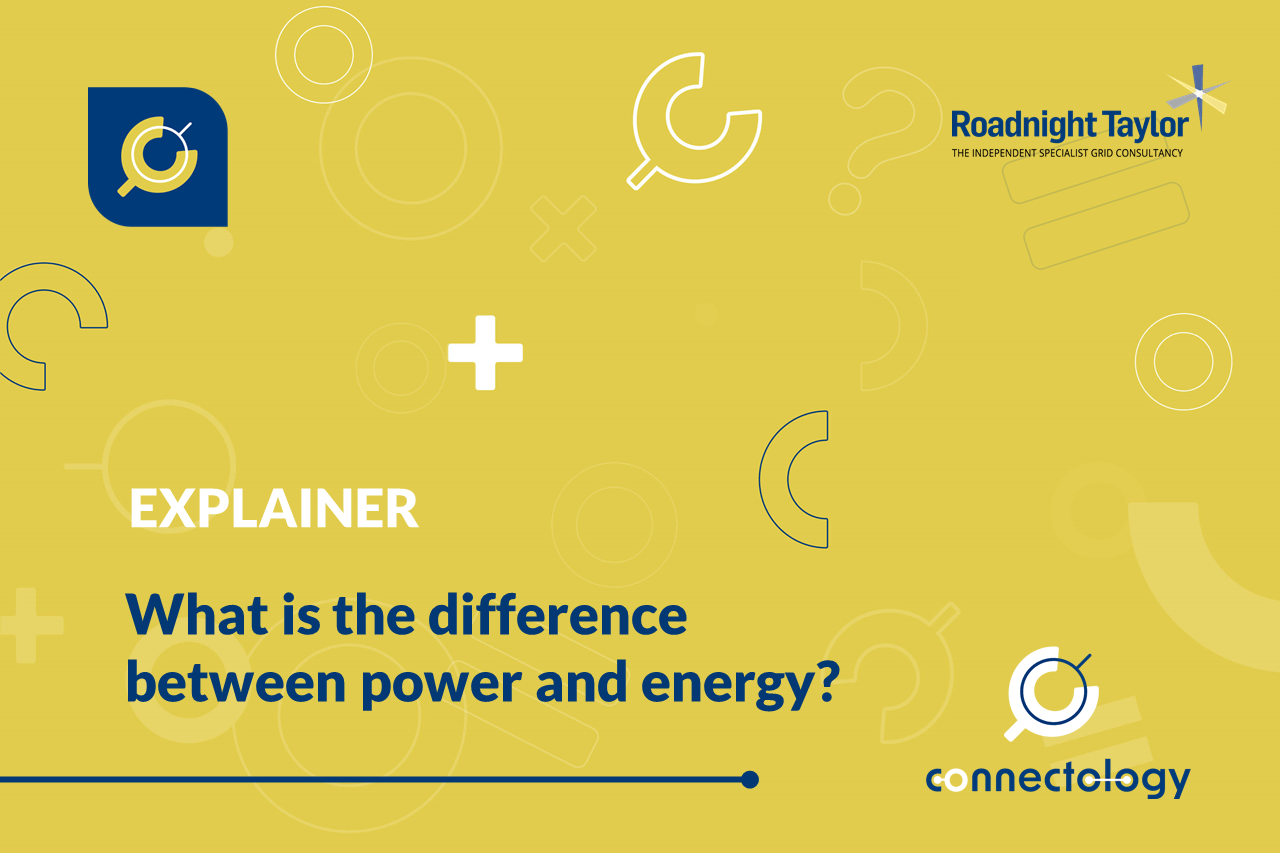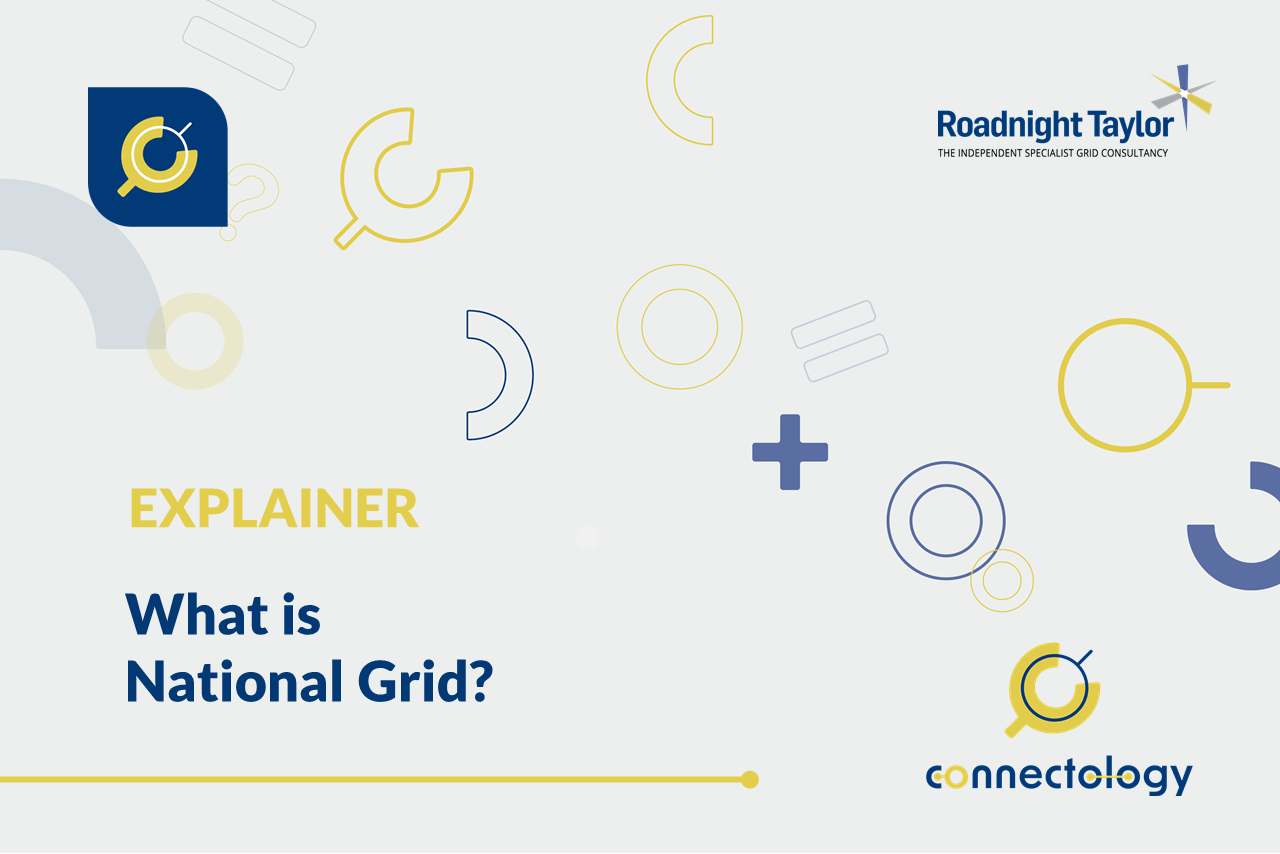Pete Aston interviewed by Datacentre Solutions Magazine
In this interview, Pete Aston examines the complex grid connection landscape confronting Britain's data centre sector. The discussion opens with findings from our recent report revealing that most developers significantly underestimate connection timescales.
What are securities and cancellation liabilities?
Cancellation liabilities are the cost of works that customers are underwriting, and securities are a partial down payment against those liabilities. Here we explain more about the charges and what they mean for different types of customer.
Podcast: Guest Series with Oli Spink, System Planning Manager, NGED
In this episode of the Connectology podcast, Pete Aston is joined by Oli Spink, Head of System Planning at National Grid Electricity Distribution. The two discuss Network Development Plans in detail, with key insights from Oli’s experience in the Distribution System Operator team.
What is outage risk?
Outages are when sections of the network are switched out, either for planned maintenance and replacement, or for an unplanned fault. The frequency and duration of outages, along with the operating characteristics of the site, combine to give an overall outage risk for a site. Here we explain more about outage risk and the limited compensation available.
What is Connections Reform?
Connections Reform is a project being run by the Electricity System Operator (ESO) to change the way connection application to the transmission system are handled. Here we provide some quick fire answers to a few key questions.
What are constraints in electricity networks?
Constraints are present in many electricity network connections. This article explains what constraints are, how they can impact grid connections and how they are different from curtailment.
What are Technical Limits?
Technical Limits is the process being rolled out by Distribution Network Operators (DNOs) and National Grid Electricity System Operator (NGESO) (as part of the ENA’s 3-point plan), starting at the end of 2023, to allow distribution schemes to connect before large scale transmission reinforcement work has finished.
What are firm and non-firm connections?
The terms firm and non-firm are used in relation to grid connections in various ways. The two main ways are in relation to the connection design and network access, as we explain here.
What is a Cost Apportionment Factor?
A Cost Apportionment Factor (CAF) is part of the method by which electricity network reinforcement costs are passed on to connecting customers. A CAF is applied up to the level of the high-cost cap. Here we explain more.
Podcast: Understanding outage risks webinar – who should tune in, when and why
In this podcast, Pete Aston explains why we are hosting an upcoming webinar to share insight to help Development and Investment Directors understand abnormal running risk, and how to go about mitigating the issues identified in their energy schemes.
Our response to Ofgem’s open letter consultation (16 May 2023)
On 16 May 2023, Ofgem launched a policy review on reforming the electricity connections system. They invited stakeholders to submit feedback on their open letter by 16 June 2023. This is our response, led by Pete Aston.
Podcast: Understanding SCR curtailment limits
In this podcast Pete Aston helps listeners understand the weaknesses of the SCR Curtailment Limit calculation formula, and how the limit differs from DNO’s curtailment reports.
Podcast: Connections reform update #1
In this podcast our Connectologists discuss the recent connections reform output from National Grid ESO and the Energy Networks Association, as well as Ofgem's open letter on future reform to the electricity connections process.
Podcast: Understanding DNO curtailment assessment reports webinar – who should tune in, when and why
In this podcast, Pete Aston and Philip Bale explain why they wanted to share, on their upcoming connectology® webinar, insight into ANM and the DNOs' reports, what they will be covering and who will benefit.
Podcast: Hinkley Point C Connection Project: an MP’s view – the Rt Hon Dr Liam Fox on the challenges for North Somerset and the Electricity Transmission (Compensation) Bill
The second in a series of Pete Aston’s look at the HPC project, aimed at helping developers with connection offers understand the effect that transmission reinforcement work has on their projects.
Podcast: Hinkley Point C Connection Project: an introduction – Insights into transmission reinforcements and for developers stuck behind such works
Pete introduces the Hinkley Point C Connection project, with a view to helping developers understand the scale of transmission works, and what it means for connections projects that are sitting behind similar, if not more extensive, reinforcements.
What is Deep Connect and Manage?
Deep Connect and Manage (DC&M) was thought of as a way to allow additional distribution generation to connect to the electricity networks, without incurring huge transmission reinforcement costs. Here we explain more.
What is Connect and Manage?
Connect and Manage (C&M) was introduced to improve access to the transmission system for transmission-connected generators. Here we look at C&M, enabling works, wider works, higher system constraints and attributable liabilities.
What is a ‘Minimum Scheme’ for a grid connection?
The Minimum Scheme is the grid connection design that provides the required capacity at the lowest overall capital cost, as estimated by the Distribution Network Operator. It has its nuances though, as Pete Asont explains.
Current± invites our Connectologists® to give their perspective on the grid connectivity issue
Pete Aston has been interviewed and quoted by Current± on grid connectivity - one of the core challenges plaguing the UK’s energy networks.
Pete Aston gives his insight on grid connection delays to E&T
E&T interviewed Pete Aston, along with developers and engineering firms, on how grid connection delays are putting both climate targets and energy security at risk.
Grid connections – revolution or evolution – Electricity Storage Network 2023
Pete Aston was invited to join the panel at the Electricity Storage Network (ESN) Annual Conference 2023 to discuss grid connections and is there a revolution or evolution on the horizon for electricity storage?
Podcast: Game or be Gamed? The Significant Code Review
Game or be Gamed? The Significant Code Review - strategies and tactics when connecting under the new rules.
Grid connection charges and Significant Code Review: the risks and opportunities
Here, we have highlighted the main considerations of the Significant Code Review – what to look for and how our team could help identify these risks and maximise the opportunities for your project.
What is a high-cost cap?
A high-cost cap is a way of limiting the amount of cost a Distribution Network Operator (DNO) might have to pick up from new grid connections. Pete Aston explains more below.
What is the difference between network reinforcement and network extension?
The difference between network reinforcement and network extension can seem trivial but it makes a massive difference to how new schemes are charged.
What is network protection and what risk can it bring to connections?
This article is about how network companies isolate faults on the network and the risks for new connections. These protection-related issues can significantly impact on the cost of a scheme and can be the make-or-break factor.
Net Hero Podcast – Is the grid going to grind down net zero?
Pete Aston was invited to join Sumit Bose on the Future Net Hero podcast to look at whether the lack of grid capacity and infrastructure will stop businesses getting to net zero.
Transmission reinforcement charges – and how supergrid transformer charges are blocking new connections
We look at transmission network reinforcement charges, how supergrid transformer charges are blocking new connections and offer some potential solutions.
The Telegraph interviews Pete Aston on grid delays
Following our flagging of the long connection timescales being given to large-scale generation and storage schemes to the Financial Times, Pete Aston has been interviewed by the Telegraph.
The problem with tertiary connections
Tertiary connection offers come with issues. Here we explain some, including cost, constraints, timescales, ownership and third party works.
P28, the engineering recommendation limiting the deployment of battery storage
Interpretation by some DNOs of Engineering Recommendation P28 is threatening the deployment of battery storage schemes across large parts of the GB network. It has sparked an urgent debate, and one which Roadnight Taylor is proud to be influencing.
What is Active Network Management?
We explain what is Active Network Management (ANM) and what it means for some proposed grid connection projects.
What limits Active Network Management systems?
Two factors limit an Active Network Management System; financial and technical limitations. This article discusses these in detail.
What is Category Z Active Network Management?
We explain the legacy system of Category Z Active Network Management (ANM).
What is Category B Active Network Management?
We explain what is Category B Active Network Management (ANM) and what it means for some proposed grid connection projects.
What are tertiary connections?
We illustrate tertiary windings and connections, and explain why they are so popular for connections.
What are Statement of Works, Project Progression, Appendix G and Modification Applications?
Statement of Works, Appendix G, Project Progressions and Modification Applications - what are they and what is the difference? And what are the implications for new generation connections?
What is curtailment in electricity networks and how does it work?
We explain what is network curtailment, how it is calculated, and how you can seek further help to understand potential curtailment on your project.
What is soft intertrip?
Intertripping has been used for decades to help manage the network. A soft intertrip is a more recent modification of the standard intertrip. This article explains what a soft intertrip does.
What is demand headroom?
We explore the rating of the network for demand and the headroom for new demand connections.
What is voltage regulation and tap changer risk?
We help explain voltage regulation and tap changer risk.
What can affect the deliverability of a cable route?
We highlight some of the main challenges to installing an underground cable and delivering the cable route for an energy project
How close does an energy scheme need to be to an electricity network?
We look at how far a site can be from an EHV network, and at what point it might become unviable
What are circuit ratings?
What explain what is meant by circuit rating and the impact on developers looking to connect new demand, generation or energy storage projects
What are transformers and how do they work?
We help explain how transformers work, and illustrate primary and secondary windings.
What are second comer charges?
We explain second comer charges for distribution networks, payment of charges and the presentation of second comer charges in connection offers
Triggered or planned network reinforcement – help or a hinderance?
Reinforcements that have already been triggered on a network can be either a help or a hinderance to new connections. Here we explain more.
What is network reinforcement?
We explain what is network reinforcement, what solutions are available to network companies to enable new connections and who pays for them.
What is fault level headroom?
We explain fault level on electrical circuits, as an introduction to our next explainer on what is fault level headroom.
What is fault level?
We explain fault level on electrical circuits, as an introduction to our next explainer on what is fault level headroom.
What is reverse power flow?
We explain what is reverse power flow and the issues that it can cause.
What is interactivity?
Interactivity is when two or more grid connection applications will make use of the same part of the network and where not all the applications can proceed.
What is voltage and voltage headroom?
We explain about voltage and voltage headroom, and how it can impact new connections.
What is the difference between power and energy?
We explain the difference between power and energy - and the terms megawatt (MW), kilowatt (kW) and megawatt (MWh) and kilowatt hour (kWh)
What is network complexity?
We help explain network complexity for those who are new to networks and renewable energy projects.
What is National Grid?
'The national grid’ is commonly used to describe the entire electrical network in GB. However, from a network perspective, ‘National Grid’ is a much more specific term, which we describe in this article.
Electricity transmission and distribution networks for newbies
We help explain transmission and distribution networks in a simple way for those who are new to renewable energy projects.
Pete Aston joins Roadnight Taylor as Network Engineer
Find out more about Pete Aston, former Primary System Design Manager at Western Power Distribution, and his reasons why he joined Roadnight Taylor. Our CEO, Hugh Taylor, also explains why Pete is a perfect fit for the Roadnight Taylor team.

